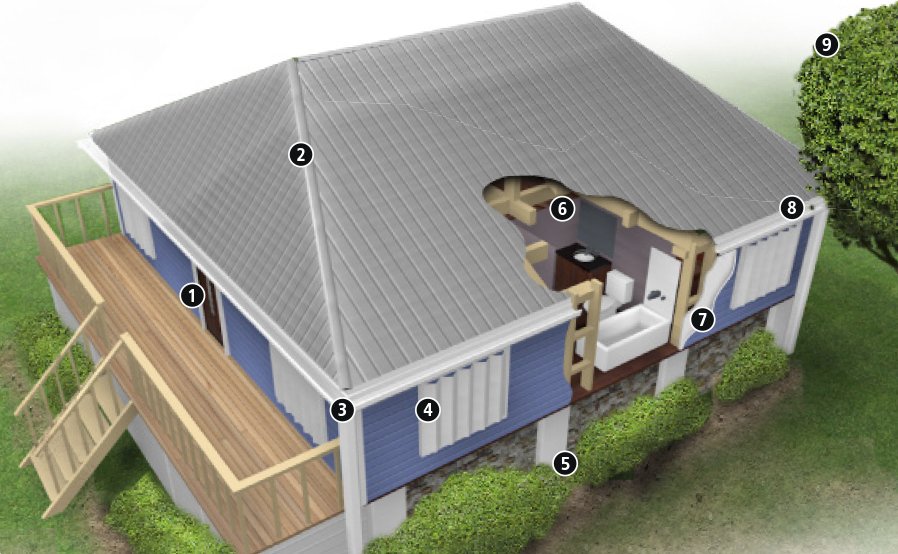How to cyclone-proof your house

Houses in Australia’s tropics have to be built to withstand winds of up to 310km/h. The key to protecting against the great sucking force or ‘uplift pressures’ created by cyclones, says Dr David Henderson of the Cyclone Testing Station at James Cook University, Queensland, is to ensure all the elements of the house are securely fixed together and down to the foundations.
The results speak for themselves: in the worst-hit areas of Queensland, 2011’s Cyclone Yasi ripped off 20 per cent of roofs fitted in the 1980s, before cyclone-resistant building measures were implemented. Only 3 per cent of roofs installed afterwards were lost.

Building in wind resistance
1. DOORS are secured with barrel bolts. If a door facing into the wind fails, the positive pressure pushing on the outside suddenly enters the house, doubling the load on the roof, with potentially catastrophic consequences. Roller doors designed for cyclonic regions are recommended.
2. ROOFS are angled on all four sides. These fared better during Cyclone Yasi than gabled roofs angled on only two sides.
3. GUTTERING is firmly secured to the house. Water tanks, fences and sheds need strong foundations, as all can become missiles hurled at the house.
4. WINDOWS have mesh screens, bolted shutters and shatterproof glass.Opening windows on the downwind side to relieve pressure is dangerous, because wind can suddenly change direction.
5. FOOTINGS secure a house to the ground. They should be set to the recommended weight and depth.
6. A SHELTER ROOM with both reinforced concrete walls and ceiling, and stocked with supplies, provides a safe haven.
7. WATERPROOF SEALS and water-resilient walls stop rain being sucked in by pressure differences.
8. VENTS installed in the roof or eaves may reduce wind pressure created if a door or wall facing into the wind fails.
9. TREES and overhanging branches should be trimmed back well away from the house.
All clamped down
ROOF CLADDING gets sucked upward, so each tile or sheet of metal must be fastened to roof battens with screws or clips. Nails get ripped straight out.
REINFORCED STUD WALLS are the frame to which all cladding is attached. Large buildings have concrete blocks with reinforcing rods. Brick and mortar isn’t strong enough to stand the uplift. pressure.
ROOF BATTENS should be firmly secured to the roof trusses with screws, and the trusses should be attached to the walls by straps or bolts.




